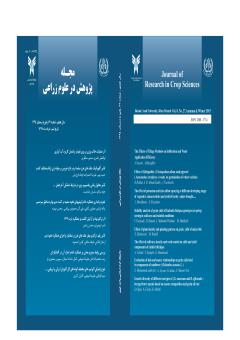-
-
List of Articles
-
Open Access Article
1 - The Effects of Tillage Methods on Infiltration and Water Application Efficiency
ابوالفضل ناصری منصوره مظفّري -
Open Access Article
2 - Effect of Allelopathic ( Chenopodium album )and pigweed ( Amaranthus retroflexus ) weeds on germination of wheat varieties
حميد بهبر -
Open Access Article
3 - The effect of potassium and zinc sulfate spraying at different developing stages of vegetative characteristics and yield of barley under drought stress conditions in the last periods of the cropping season
جواد مرادلو sasan rezadust -
Open Access Article
4 - Stability analysis of grain yield of Kabouli chickpea genotypes at spring sowing in cold area and rainfed conditions
يداله فرايدي -
Open Access Article
5 - Effect of plant density and planting pattern on grain yield of maize 666
ناصر شهسواري -
Open Access Article
6 - The effect of cultivars, density and weed control on yield and yield components of rainfed chickpea
ارسلان فلاحي فرهاد صادقی -
Open Access Article
7 - Evaluation of sink and source relationships on grain yield and its components of sunflower ( Helianthus annuus L. )
زينب محمدزاده اصل عليرضا عيوضي -
Open Access Article
8 - Genetic diversity of different ecotypes of ( E. amoneum and B. officinalis ) borage flower species based on essence composition and grain oil rate
سيما اوجاني
-
The rights to this website are owned by the Raimag Press Management System.
Copyright © 2021-2025







